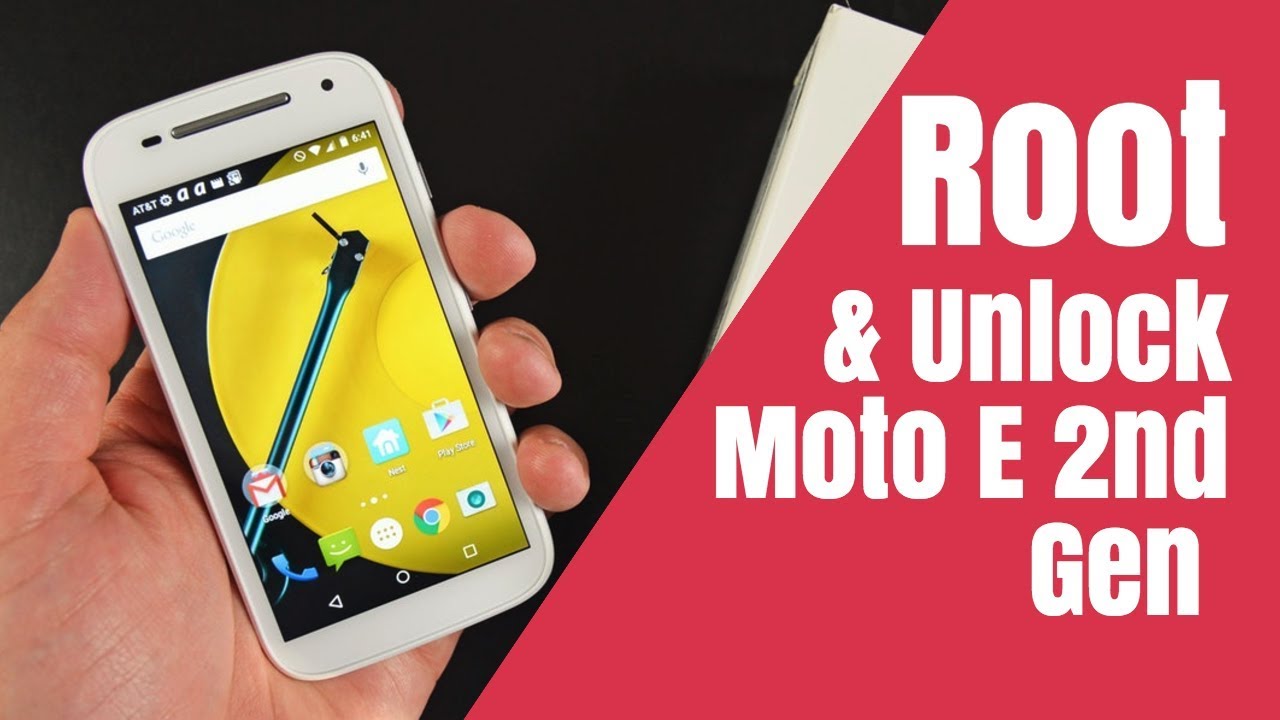Introduction
In the fast-paced world of mobile technology, smartphones have become an indispensable part of our daily lives. With their advanced capabilities and features, these devices have evolved into powerful tools that enable us to stay connected, productive, and entertained. Among the myriad of functionalities offered by smartphones, USB debugging is a crucial feature that allows users to establish a direct connection between their device and a computer for the purpose of debugging, installing applications, and transferring data.
As the proud owner of a Moto G Power, you are likely familiar with the myriad of impressive features and functionalities that this device offers. However, it's essential to understand the significance of USB debugging and the reasons why you might need to disable it at times. While USB debugging provides a convenient way to interact with your device on a deeper level, there are situations where disabling this feature becomes necessary to ensure the security and optimal performance of your Moto G Power.
In this comprehensive guide, we will delve into the intricacies of USB debugging, explore the reasons for disabling it on your Moto G Power, and provide you with a step-by-step walkthrough on how to disable USB debugging effectively. By the end of this guide, you will have a clear understanding of the importance of managing USB debugging settings and the practical steps to disable it when needed. Let's embark on this enlightening journey to optimize the functionality and security of your Moto G Power.
What is USB Debugging?
USB debugging is a feature that allows a smartphone to communicate with a computer over a USB connection. It plays a pivotal role in facilitating the smooth interaction between the device and development tools, such as Android Studio, for the purpose of app development, debugging, and system-level operations. When USB debugging is enabled, it grants the computer privileged access to the smartphone's operating system, enabling developers to execute advanced commands, transfer data, and diagnose issues more effectively.
By activating USB debugging, users can harness a wide array of capabilities, including the ability to install custom firmware, access the device's system logs for troubleshooting, and run powerful diagnostic tools. This feature is particularly valuable for developers and tech-savvy users who seek to optimize the performance of their devices, customize the user interface, or diagnose and fix software-related issues.
Furthermore, USB debugging serves as a gateway for advanced users to unlock the full potential of their smartphones, allowing them to delve into the intricacies of the Android operating system and harness its flexibility to a greater extent. This feature empowers users to perform tasks that are beyond the scope of standard user operations, providing a deeper level of control and customization.
However, it's important to note that while USB debugging offers a plethora of benefits for developers and advanced users, it also introduces potential security risks. When enabled, USB debugging grants elevated access to the device, which could be exploited by malicious software or unauthorized users if the device is connected to an untrusted computer or charging station. Therefore, it's crucial to exercise caution and judiciously manage the USB debugging settings to mitigate security vulnerabilities and safeguard the integrity of the device.
In essence, USB debugging is a powerful feature that empowers users to engage with their smartphones at a deeper level, enabling advanced operations and diagnostics. While it offers tremendous utility for developers and enthusiasts, it's essential to strike a balance between leveraging its capabilities and ensuring the security of the device. Understanding the intricacies of USB debugging is pivotal for optimizing the functionality and security of your Moto G Power.
Why Disable USB Debugging on Moto G Power?
Disabling USB debugging on your Moto G Power is a prudent measure to uphold the security and privacy of your device. While USB debugging offers a myriad of benefits for developers and advanced users, it also introduces potential vulnerabilities that could compromise the integrity of your smartphone. By understanding the reasons for disabling USB debugging, you can proactively mitigate security risks and ensure the optimal performance of your device.
Security Concerns:
When USB debugging is enabled, it grants elevated access to the device's operating system, allowing for advanced commands and data transfer between the smartphone and a connected computer. While this functionality is essential for development and diagnostics, it also poses a security risk if the device is connected to an untrusted computer or charging station. Malicious software or unauthorized users could exploit the privileged access granted by USB debugging to compromise the device's security, potentially leading to data theft, unauthorized access, or the installation of harmful software. By disabling USB debugging when it's not actively required for development or debugging purposes, you can mitigate these security concerns and safeguard your Moto G Power against potential threats.
Privacy Protection:
In addition to security considerations, disabling USB debugging contributes to preserving the privacy of your device. When USB debugging is enabled, it allows for unrestricted access to the device's system logs, app data, and other sensitive information. This heightened access could inadvertently expose confidential data to unauthorized parties if the device is connected to an unsecured computer or if a malicious actor gains access to the connected system. By disabling USB debugging when it's not in use, you can prevent unauthorized access to sensitive data and uphold the privacy of your personal information.
Battery and Performance Optimization:
Furthermore, disabling USB debugging when it's not actively utilized can contribute to optimizing the battery life and performance of your Moto G Power. When USB debugging is enabled, it may consume additional system resources and contribute to increased power consumption, especially when the device is connected to a computer. By disabling this feature when it's not essential, you can conserve battery life and ensure that the device operates at its optimal performance levels.
In essence, disabling USB debugging on your Moto G Power is a proactive step to mitigate security risks, protect privacy, and optimize the device's performance. By judiciously managing the USB debugging settings, you can strike a balance between leveraging its capabilities for development and diagnostics while safeguarding the integrity of your smartphone.
How to Disable USB Debugging on Moto G Power
Disabling USB debugging on your Moto G Power is a straightforward process that can be accomplished through the device's settings. By following the simple steps outlined below, you can effectively disable USB debugging and mitigate potential security risks while ensuring the optimal performance and privacy of your smartphone.
-
Access the Settings Menu: Begin by unlocking your Moto G Power and navigating to the "Settings" app, which is represented by a gear icon. The Settings app serves as the central hub for managing various configurations and features of your device.
-
Navigate to System Settings: Within the Settings menu, scroll down and locate the "System" category. Tap on "System" to access a range of advanced settings related to the device's operation and functionality.
-
Select Developer Options: Within the System settings, scroll down and locate the "Developer options" entry. Developer options encompass a set of advanced settings tailored for developers and enthusiasts, including USB debugging and other debugging-related features.
-
Disable USB Debugging: Upon entering the Developer options menu, locate the "USB debugging" toggle switch. By default, USB debugging is enabled, as indicated by the toggle switch being in the "On" position. To disable USB debugging, simply tap on the toggle switch to turn it off. A confirmation prompt may appear, requesting your consent to disable USB debugging. Confirm the action to proceed.
-
Verify the Status: After disabling USB debugging, it's advisable to verify the status to ensure that the feature has been successfully turned off. You can do so by observing the status of the USB debugging toggle switch, which should now be in the "Off" position.
By following these steps, you have effectively disabled USB debugging on your Moto G Power, thereby mitigating potential security risks and preserving the privacy of your device. It's important to exercise caution when enabling USB debugging in the future, ensuring that it is only activated when necessary for development, debugging, or advanced operations.
In essence, the process of disabling USB debugging on your Moto G Power is a pivotal step in proactively managing the device's security and optimizing its performance. By familiarizing yourself with the steps outlined above, you can confidently navigate the device's settings and make informed decisions to safeguard the integrity of your smartphone.
Conclusion
In conclusion, the significance of USB debugging on the Moto G Power cannot be overstated, as it empowers users to engage with their devices at a deeper level, enabling advanced operations and diagnostics. However, the decision to disable USB debugging is a proactive measure aimed at mitigating potential security risks, protecting privacy, and optimizing the device's performance.
By understanding the intricacies of USB debugging and the reasons for disabling it, Moto G Power users can make informed decisions to strike a balance between leveraging its capabilities for development and diagnostics while safeguarding the integrity of their smartphones. The process of disabling USB debugging is a straightforward endeavor that can be accomplished through the device's settings, ensuring that potential security vulnerabilities are effectively mitigated.
Furthermore, the decision to disable USB debugging contributes to preserving the privacy of the device, preventing unauthorized access to sensitive data, and optimizing battery life and performance. This proactive approach aligns with the broader goal of ensuring the security and optimal functionality of the Moto G Power, thereby enhancing the overall user experience.
In essence, the comprehensive guide presented here equips Moto G Power users with the knowledge and practical steps to effectively manage USB debugging settings, enabling them to make informed decisions that prioritize security, privacy, and performance. By exercising caution and judiciously disabling USB debugging when it's not actively required for development or debugging purposes, users can confidently navigate the device's settings and safeguard the integrity of their smartphones.
Ultimately, the decision to disable USB debugging on the Moto G Power reflects a proactive stance toward security and privacy, aligning with the broader ethos of responsible device management. By leveraging the insights and practical guidance provided in this guide, Moto G Power users can optimize the functionality and security of their devices, ensuring a seamless and secure user experience.

























